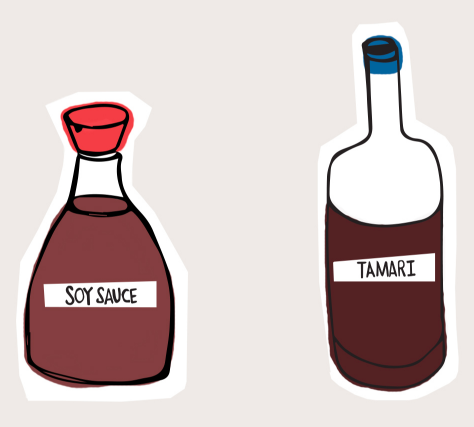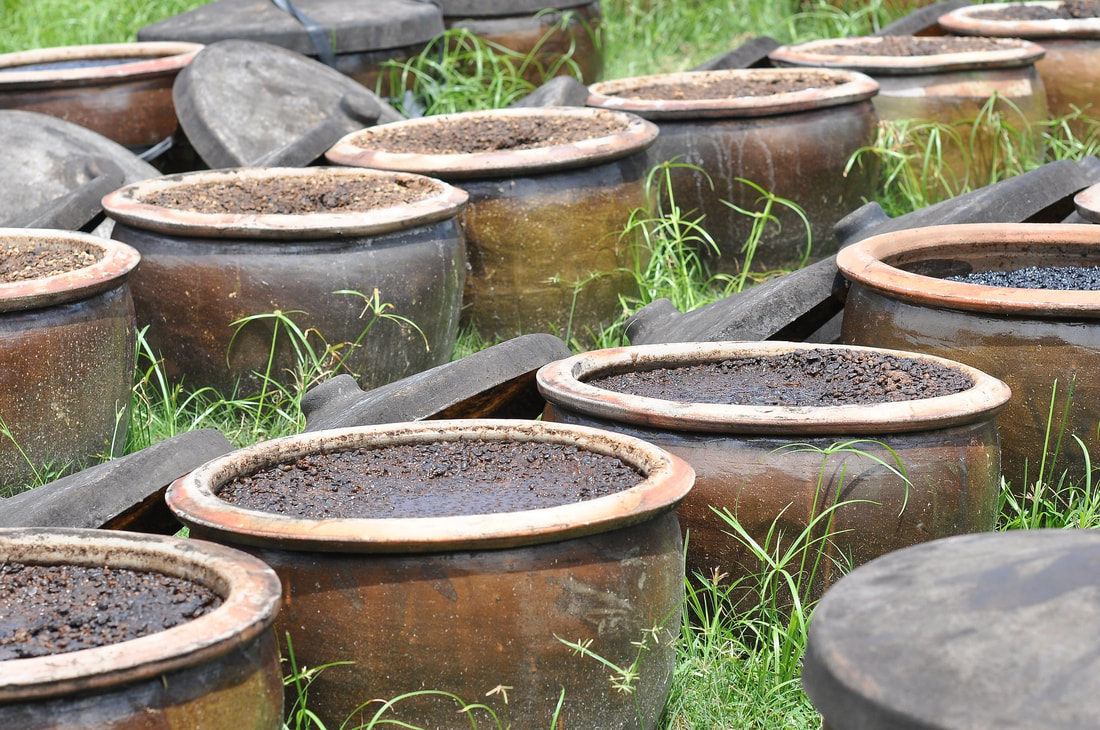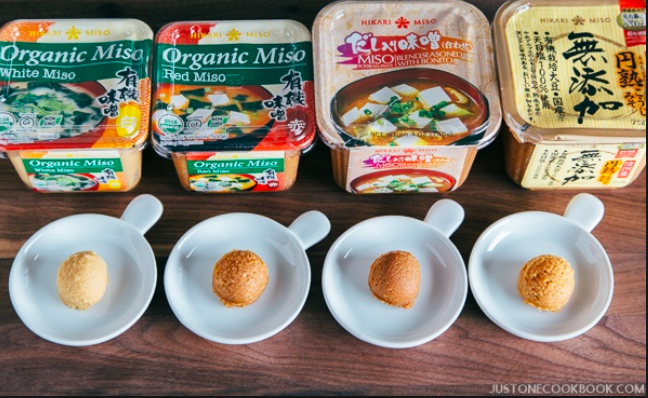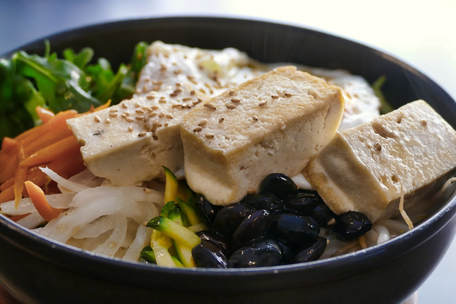know the difference
Yes, there are differences between soy sauce and tamari: While both are derived from soy through fermentation, they surprisingly have different taste profiles largely due to the presence of wheat. Soy sauce always contains wheat (beware, you gluten-free folks) and tamari has little-to-no wheat. Yes, you may actually find brands of tamari out there that do contain wheat (ahem, gluten), but the label will indicate if it is gluten-free or wheat-free.
The next key distinction is the country of origin. Soy Sauce: A Chinese byproduct of soy products now made throughout Asia Tamari: A Japanese byproduct of miso paste, typically less salty (read your labels), and thicker production of soy sauce vs. tamari
Soy sauce is made through fermentation or by hydrolysis (chemically engineered), with different methods and durations of fermentation and water, salt content, soy, and other non-specific added ingredients. Therefore, there are remarkable differences in flavor between soy sauce brands. You'll have to test them all, or whatever you can find, and choose the one that makes your personal taste buds scream for more.
Traditionally speaking, soy sauces take months to make. For simplicity's sake, the sauce is made by mixing roasted/cracked grains with cooked soy beans, mold cultures, and yeasts in brine. Here are the steps in case you want more deets:
tamari, the "original" Japanese soy sauce
Tamari, on the other hand, is the liquid run-off from miso paste, fermented soybeans with salt, and koji [a more specific fungus, Aspergillus oryzae], rice barley, or other ingredients. Typically, the ratio of wheat and other grains to soy is much smaller than soy sauce, and often contains NO wheat. Homemade tamari can provide people with celiac disease, wheat sensitivities or an intolerance with an tasty alternative to soy sauce. Be sure to read the label on commercial tamari to be sure it specifically says "gluten-free".
Now, the steps of producing tamari:
battle of the sauces
Time to experiment! Divide this recipe by 2, then make the recipe using soy sauce and make the recipe again using tamari. Compare each recipe after your taste test with friends, family, or just yourself. Do you notice anything different between the two? Which has more depth? Is one noticeably saltier than the other? Leave your comments below to share your opinion.
Asian Grain Bowl (vegan)
Serves 2 Ingredients: 8 oz tofu, cubed 1 tablespoon sesame oil 1 tablespoon rice wine vinegar 5 tablespoons tamari or soy sauce 1” piece grated ginger 1 cup short grain brown rice, rinsed and drained 8 baby bok choy, sliced in half 1/2 cup lotus, bite sized pieces 1/2 cup assorted vegetables (carrot and red cabbage shown) 1 cup assorted pickled vegetables*(optional) Directions: 1. In a pot, add 1 ¾ cup water with rice and 1 tablespoon tamari. Bring to a boil, reduce to a simmer and cook, about 40 minutes. 2. Meanwhile, in a mixing bowl, toss the tofu and lotus in the following marinade ingredients: sesame, rice wine vinegar, and grated ginger. Allow to sit until you begin assembling the bowls. 3. Ten minutes before the rice is finished, assemble your steamer and begin heating the water, about ½ “ high in the pan holding the steamer. When ready to steam, place bok choy in steamer and cook for 3-5 minutes. 4. Assemble each bowl, dividing each of the ingredients equally: rice, bok choy, tofu, lotus, carrot, red cabbage, pickled vegetables, and drizzle some of the leftover tofu marinade on top (green onions and sesame seeds make for great garnishes if you want to be showy). You can choose any kind of pickled vegetables, including: carrot, asparagus, beets, green beans, watermelon, cucumbers (quick pickles), or radish variety. suggestions
I recommend keeping both sauces stocked in your kitchen to experiment in your recipes. Swapping out one for another will certainly change the flavour, but it won't affect the overall dish in terms of 'turning out'.
Looking for more recipes to experiment with using soy sauce/tamari? No worries, I've got you covered: peanut sauce lotus root, carrot, & daikon slaw -or- make your own fried rice: toss soy sauce/tamari in leftover rice sautéed with scrambled egg and veggies (bok choy, mushrooms, carrot, onion).
2 Comments
3/9/2021 01:13:37 pm
One of the best and perfect website ever about health. Love you, admin,
Reply
Leave a Reply. |
SEARCH ARTICLES BY CATEGORYAll Dough & Noodle Main Nosh Sauce Or Spread Skin Soups & Stews Spices Sweets READ NEXTMOST POPULAR |
Copyright © 2015 Ranelle Kirchner - All Rights Reserved - Designed by Adrian Daniel Schramm



